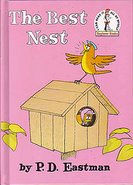DANDELION, LEEK, CARROT SOUP (DLC SOUP)
Ingredients
2 pounds (about 6 cups) dandelion greens, trimmed and washed
1 tablespoon butter or olive oil
4 cups vegetable stock
2 large leeks, white and light parts only, cleaned and sliced
1 carrot, cleaned and diced
2 1/2 cups milk
1 tablespoon Dijon mustard (optional)
Salt and pepper to taste
Dandelion buds and/or flower petals for garnish
2 pounds (about 6 cups) dandelion greens, trimmed and washed
1 tablespoon butter or olive oil
4 cups vegetable stock
2 large leeks, white and light parts only, cleaned and sliced
1 carrot, cleaned and diced
2 1/2 cups milk
1 tablespoon Dijon mustard (optional)
Salt and pepper to taste
Dandelion buds and/or flower petals for garnish
1. If using more mature or very bitter tasting greens, blanch them in a pot of boiling salted water, then drain and squeeze out the excess water, chop and set aside.
2. Heat butter or oil in a large pot over medium high heat, add greens, carrot and leeks and cook, stirring often, for 15 minutes.
3. Add stock and simmer for about 15 minutes. Reduce heat to medium and whisk in milk, cook stirring frequently, until slightly thickened.
4. Puree mix in a tightly-covered blender until smooth, taking care with the hot liquid. Season with salt and pepper, and add Dijon if you like.
5. Serve in bowls and garnish with flowers or buds.
DANDELION SYRUP
Ingredients
100 dandelion flowers, or 1 and 1/2 cups petals
1 cup sweetener (see below)
3 cups water
Juice of 1/2 lemon (optional)
1 cup sweetener (see below)
3 cups water
Juice of 1/2 lemon (optional)
1. Remove the petals from the sepal (the sepal consists of the small tight leaves that extend from the stem and grasp the flower). It takes a while to get the hang of, but gets much quicker as you go along. Be sure to not allow any green into the petals, it will add bitterness to the syrup. Rinse to get rid of any insects or dirt.
2. Place the petals in a medium pot and cover with 3 cups water and bring to a simmer. Turn off the heat, cover and let set overnight.
3. Strain dandelion water into a bowl, pressing on the flowers with the back of a spoon to extract all the liquid.
4. Return water to pot and add sweetener, and lemon juice if using, and simmer over low heat until thickened. The longer you simmer the thicker it will get. So stir and
5. Allow to cool, and pour into a clean, sterile* jar or bottle. Store covered in refrigerator.
Makes about 2 cups
 More details about dandelions can be found at Coffee Grounds and Eggshells. It is quite interesting stuff!
More details about dandelions can be found at Coffee Grounds and Eggshells. It is quite interesting stuff!MORE RECIPES:
SOURCES:
GRAPHIC OF SYRUP: Happy Self Sufficient HUMOROUS DANDELION ARTICLE: Dandelion War
Links:
http://www.eveventure.com/Peggy/article/oh-those-dandy-dandelions
http://coffeegroundsandeggshells.blogspot.com/2011/05/oh-those-dandelions.html












No comments:
Post a Comment